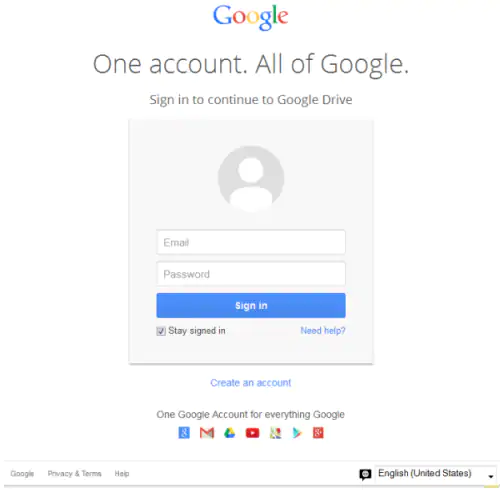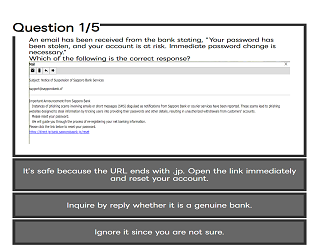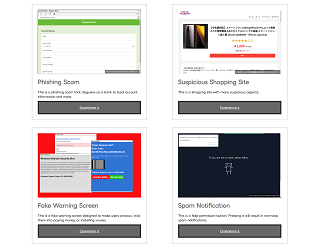About
In the age of advancing internet technology, various scams and frauds have been increasing on the
web.
Here, we present some real examples of such incidents.
Internet Scam Cases and Numbers
Examples and Statistics
-
- E-commerce Scams -

Many people have fallen victim to fake websites they found through internet searches or social media advertisements. They were lured by heavily discounted branded products and ended up providing personal information or even making payments. It's challenging to notice these scams as some websites closely resemble the URLs of well-known brands. Remember, if something sounds too good to be true, it probably is. Stay vigilant!
-
- One-Click Scams -

This scam involves receiving emails or visiting websites where, with just one click, the scammers claim that you've agreed to a contract and demand payment. They attract users through enticing content like adult or dating websites. The scammers may pressure users by falsely declaring, "Registration complete! Please transfer 300,000 yen within 3 days." Don't fall for these tricks. Avoid clicking unknown URLs and never follow such demands!
-
- Specific Figures -
According to the Japan Cybercrime Control Center, the number of reported cases involving malicious e-commerce websites in the first half of 2022 increased significantly to 12,830, compared to 6,696 cases in the previous year. This surge is attributed to the COVID-19 pandemic, which led to an increased use of the internet.
| 2021 | 2022 (First Half) | |||
|---|---|---|---|---|
| Source of Internet Search | 12,360 | 69.1% | 7,306 | 56.9% |
| URL in Emails | 2,614 | 14.6% | 2,084 | 16.2% |
| SNS Posts (e.g., Twitter) | 740 | 4.1% | 730 | 16.2% |
| Posts in Forums and Bulletin Boards | 265 | 1.5% | 179 | 1.4% |
| Other | 1,899 | 10.6% | 2,531 | 19.7% |
| 2021 | 2022 (First Half) | |||
|---|---|---|---|---|
| Bank Transfer | 1,502 | 49.1% | 1,150 | 53.4% |
| Credit Card Payment | 988 | 32.3% | 604 | 28.1% |
| Other | 567 | 18.5% | 398 | 18.5% |
References:
Japan Cybercrime Control Center:
https://www.jc3.or.jp/threats/topics/article-459.html
Ministry of Internal Affairs and Communications:
https://www.soumu.go.jp/main_sosiki/joho_tsusin/security/enduser/security01/06.html
Internet Usage-Related Incidents
Regarding personal information and communication device usage in the past year, the most common experience reported was "receiving spam or fake billing emails," accounting for 61.4% of cases.
Companies using the internet reported various incidents in the past year. The most common was "discovering or being infected by a virus" (35.0%), followed by "receiving targeted emails" (34.5%).
Security Incidents in Companies Using Information and Communication Networks (Multiple Responses)
| 2019 (n=2,085) | 2020 (n=2,197) | |
|---|---|---|
| Experienced Some Incident | 55.2% | 54.1% |
| No Incidents | 44.8% | 45.9% |
| 2019 (n=2,085) | 2020 (n=2,197) | |
|---|---|---|
| Discovered or Infected by a Virus | 36.7% | 35.0% |
| → Discovered Virus but Not Infected | 29.5% | 29.9% |
| → Infected by Computer Virus at Least Once | 7.1% | 5.2% |
| Received Targeted Emails | 33.7% | 34.5% |
| Spam Email Relay or Proxy | 9.4% | 9.8% |
| Unauthorized Access | 2.7% | 4.2% |
| DOS (DDoS) Attacks | 2.4% | 2.4% |
| Intentional or Accidental Information Leaks | 1.2% | 0.5% |
| Website Tampering | 0.4% | 0.5% |
| Other Incidents | 1.7% | 1.1% |
Phishing Scam Example
Google Account Phishing Scam
One day, you receive an email stating, "You have an important message. Please check the Google Document at the following link." You click on the URL link in the email, leading you to a page that looks like a Google login page.

Thinking that it is for important information, you proceed to enter your login credentials on the fake Google Drive page. Afterward, you are directed to a Google Docs page, but there is no important message to be found. What you didn't realize is that your Google account login information has been sent to the attacker's server.
References:
Ministry of Internal Affairs and Communications:
https://www.soumu.go.jp/johotsusintokei/whitepaper/ja/r03/html/nd242130.html
Phishing Scams: Norton:
https://jp.norton.com/blog/online-scams/phishing-scam
Content
Quiz
Test your knowledge and awareness!
Find out how susceptible you are to being deceived.
Reproduction Pages
We have recreated some dangerous websites.
Learn from these pages and take precautions to protect yourself in your future online adventures!
Reproduction Pages
We have recreated some dangerous websites.
Learn from these pages and take precautions to protect yourself in your future online adventures!

